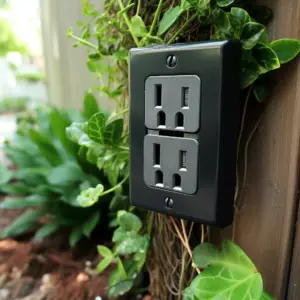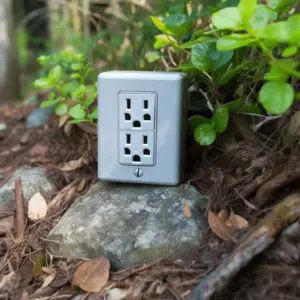Are you looking to learn how to open an outdoor outlet cover? Well, if you have an outlet installed on an outside wall, it most likely has a cover installed to protect the outer from water and elements.
However, if you want to service the outlet, then the cover has to come off. Only then you will be able to take out the rest of the outlet.
Table of Contents
How To Open Outdoor Outlet Cover: Step by step Guide

There are various types of outlet covers, although they all come off the same basic way and involve just a few tools. Here are the steps on how to open an outdoor outlet cover.
Step 1
Stand in front of the outlet and take a look at the fixture. Inspect whether there are any screws on the outside of the cover, or if there are screws only on the inside. This can be achieved by opening up the cover and looking for screws.
Step 2
Take off any external screws using a screwdriver or a flathead screwdriver, based on the style of screws used for the cover. Then pull off the cover to complete the job. If the cover doesn’t come off yet, proceed to the next step.
Step 3
Using the Philips-head screwdriver, or flathead screwdriver, open the outlet cover and remove the screws holding the cover to the outlet or wall. To make it easy to work on the outlet, pull the cover off the wall and the outlet itself.
Do You Need to Cover Outdoor Outlets?
All outdoor outlets should be covered, whether they are used or not. This is especially important for those ones that are likely exposed to the rain.
They also should be installed in special boxes alongside electrical covers. For instance, outlets installed in damp conditions and locations unprotected from rainfall need to be protected with a weatherproof cover.
One common risk associated with outdoor outlets is the possibility of someone getting electrolyzed by being in contact with the water near the outlet.
Moreover, fire can happen when an unsuspecting individual puts a plug inside a wet outlet. This can lead to a short circuit that can cause a fire.
The resultant short circuit can, in turn, cause power outages throughout the house and can even cause damage to your appliances.
Is it Good to Install Outdoor Outlets?
Having an outlet outdoor is almost as useful as having an outlet inside. If you want to mow the lawn, for instance, you will need electricity to power the lawnmower.
An electrical outlet can also be very convenient in avoiding the usage of a lot of extension cords during Halloween and Christmas.
Outdoor outlets also make an outdoor kitchen more convenient and more functional as there will be less hassle in setting up the electrical leaf blowers and pressure washers.
All things considered, an outdoor outlet can be a very convenient addition to your outside functionalities. It reduces the travel time needed in order to access electricity from the outside.
It also saves you from using extension cords, which at times can be very inconvenient. Families who like to take their activities outside will even find it more useful.
That said, there is an extra precaution when using an outlet outside of the house. Due to the location, outdoor outlets are often more exposed to elements, which might cause damage or other safety hazards. This includes weather elements such as snow or rain.
What if Outdoor Electrical Outlet Gets Wet?
If an outdoor electrical outlet gets wet, serious problems can occur. A power electrical shock can harm a person or even cause death.
The same case applies to electrical outlets that are connected to the wirings where electricity is being distributed. Remember that when the outlet becomes wet, the flow of electricity will run in the water.
When this happens, anyone who is not aware or observant enough will receive an electric shock. Note that those at risk here are children and animals that happen to play or walk outside.
Outdoor outlets are important in terms of convenience, but to mitigate the risk of water getting inside, homeowners need to employ an outdoor cover.
What Should You Do When the Outdoor Outlet Gets Wet?

The first thing is to turn off the GFCI outlet. GFCI outlets are designed to switch themselves off automatically when power has been cut off. This usually happens when the water or any liquid compromises or affects the follow of electricity.
However, if for some reason, the GFCI outlet did not turn itself off automatically you can do it manually by pressing the test button and the reset button at the same time.
In case of flood or any such events where there are many outlets affected, consider shutting down the breaker box. It is recommended to shut down the breaker box, even when the GFCI outlets successfully stopped working automatically.
You may want to call an electrician for help if you’re not sure what circuit breaker should be flipped.
How To Keep Elements from Getting Into the Outlet
Choosing the right type of outdoor outlets is one of the most important parts of ensuring safety. Keep in mind that only GFCI outlets meet the standards that NEC mandates. Also, be sure to follow the installation of the GFCI outlet.
Utilize brackets that are designed for exterior outlets. In addition, install a weatherproof cover. Weatherproof covers are usually made with plastic. It is a covering designed to protect the outlet from moisture and water.
Different types of weatherproof exist for various usage and conditions. It is important to use the right cover for the right outlet design and configuration. Otherwise, using a cover with the wrong design and configuration will easily let the water leak inside the outlet even when it is covered.


